A curated collection of vintage fungi and mushroom drawings from the book “Coloured Figures of English Fungi or Mushrooms” by James Sowerby (1809).
James Sowerby was an English naturalist, illustrator, and mineralogist. He studied art at the Royal Acadamy in London in the late 18th Century.
James started off his artistic career employed to do floral paintings for Curtis Botanical magazine. Later on, he painted broadened his illustrations, for other scientific publications. This collection contains his work on mycology.
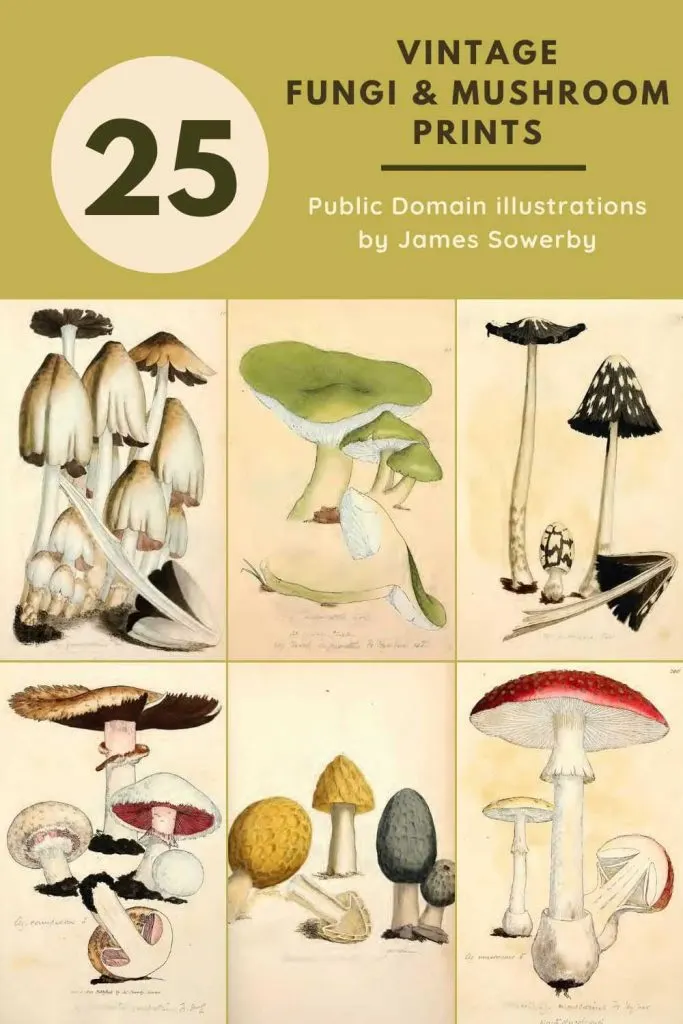
Mushrooms, Toadstools, and Fungi
All mushrooms are fungi, but not all fungi are mushrooms. Put simply mushrooms are the fruit of certain fungi. In natural history, fungi are a whole kingdom on its own just like plants and animals.
Scientifically there is no difference between toadstools and mushrooms. However, generally, when people refer to toadstools they are talking about toxic, poisonous, or inedible fungi. Whilst mushrooms are used to describe tasty and edible fungi.
Fungi are members of the group of eukaryotic organisms that includes microorganisms such as yeasts and molds. Around 120,000 species of fungi have been identified, but estimates suggest there may be between 2.2 and 3.8 million species.
Mycology is the area of biology concerned with the study of fungi. Their biology, their taxonomy, and their use to humans as a source of medicine, food, and psychotropic substances, as well as their dangers, such as toxicity. Phytopathology is the related field of study of plant diseases because many plant pathogens are fungi.
The Free Fungi & Mushroom Drawings
This is the second collection of fungi and mushroom illustrations available. The other collection focused on mushroom charts and identification posters rather than individual mushroom drawings.
In Sowerby’s book, there are hundreds of illustrations of fungi and mushrooms. Here I show a small selection of the drawings that personally appealed to me.
Click on the title above the mushroom drawing you want and a larger image will open as a new window in your browser. If you then right-click on this image with your mouse, you will have the menu option to save that image.
1. Agraicus Campestris
The mushrooms in this drawing are more commonly known as field mushrooms or in the US meadow mushrooms. It is an edible gilled mushroom closely related to the cultivated button mushroom.
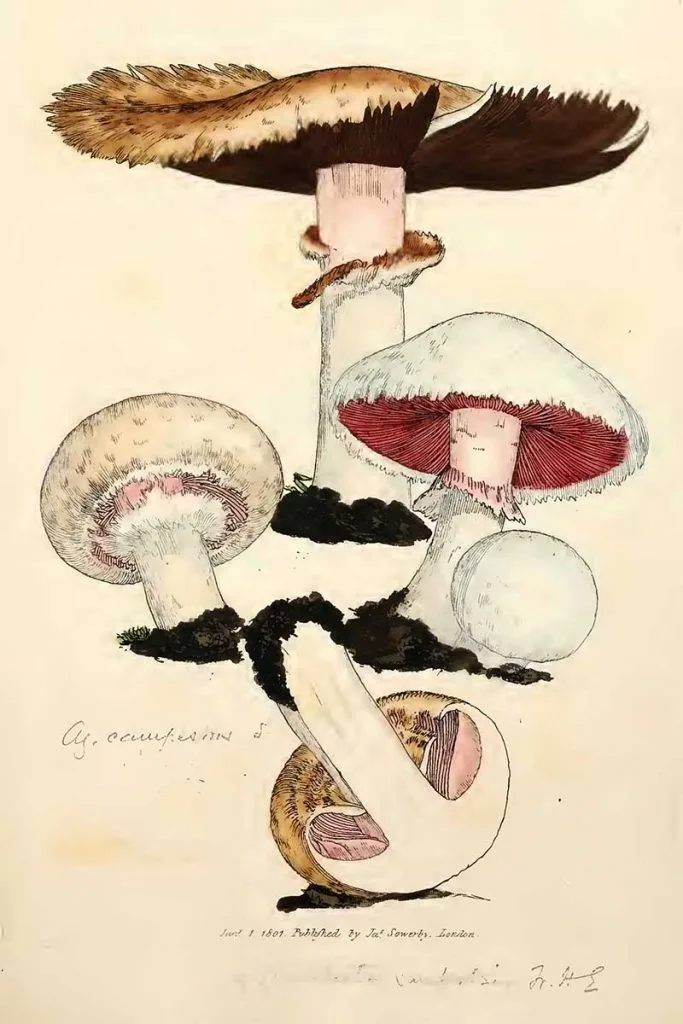
2. Amania Muscaria
This is a mushroom drawing of probably the most iconic of toadstool species. Also known as the fly agaric this red mushroom is probably one of the most recognizable mushrooms in popular culture especially in Scandinavian fairy tales.
It is classified as poisonous fungi but reports of death from eating them are very rare.
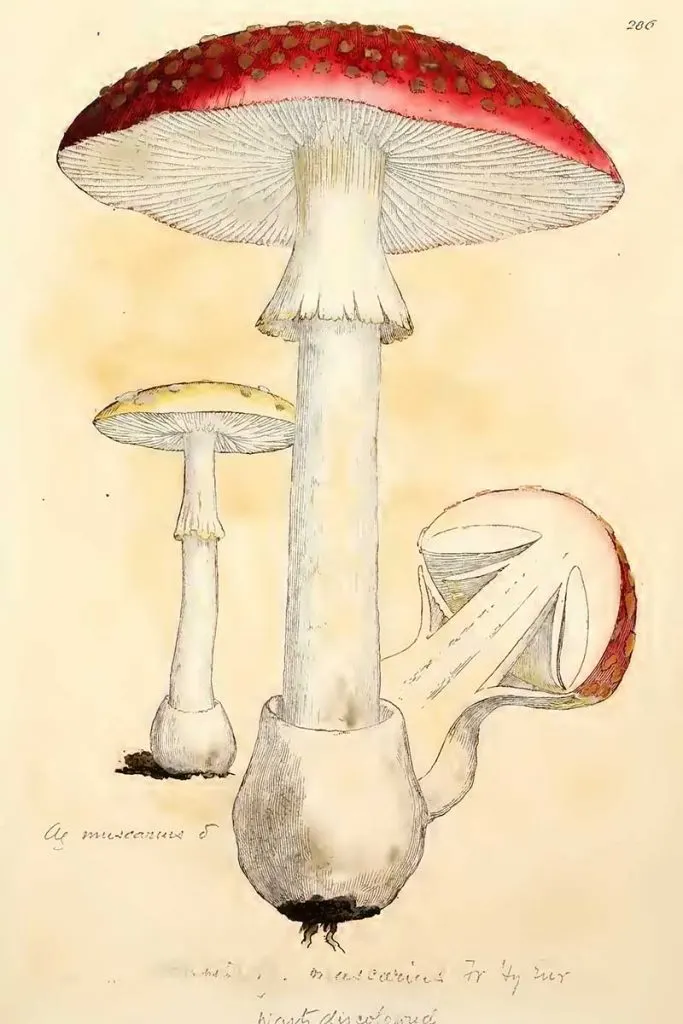
3. Chroogomphus rutilus
This fungus is commonly known as the brown slimecap or the copper spike is found in Europe and North America. The fruit bodies are edible but not highly regarded.
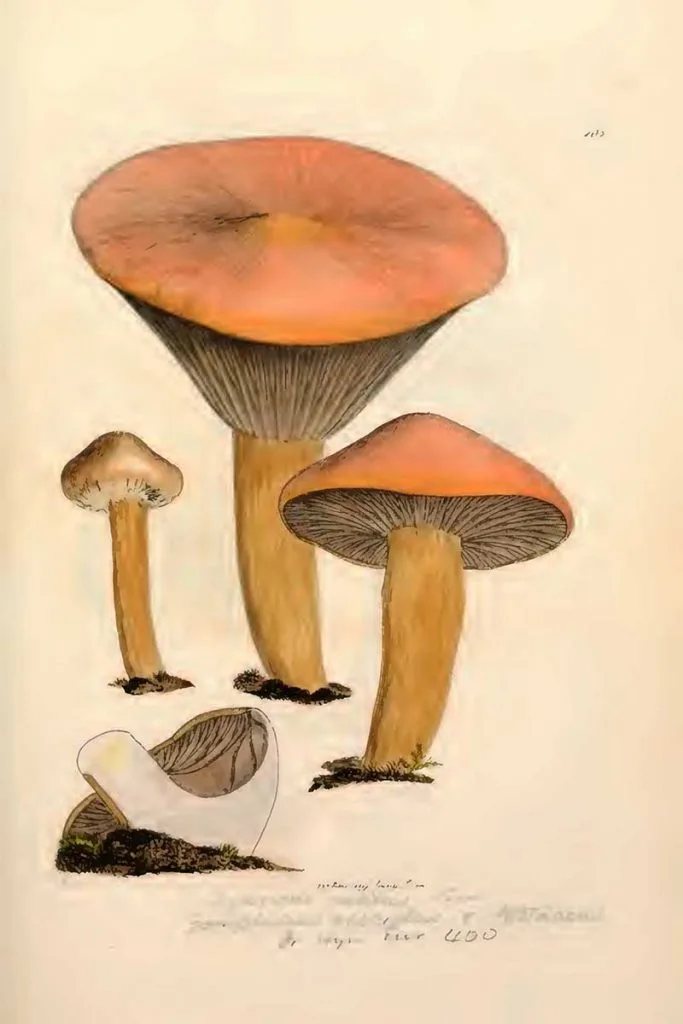
4. Coprinellus Disseminatus
The mushroom drawings are more commonly known as “fairy inkcap“. Unlike most other coprinoid mushrooms, these do not dissolve into black ink (deliquesce) in maturity. The mushroom is edible but of low quality.
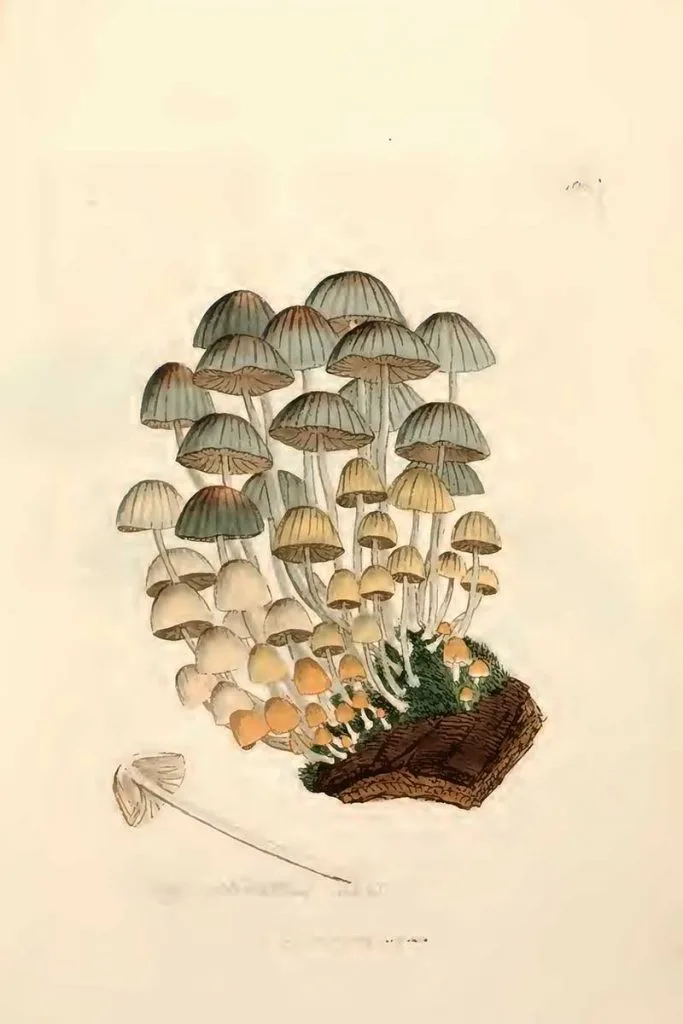
5. Mushroom Drawings – Coprinopsis atramentaria
More commonly known as the common ink cap or inky cap mushroom. It also has the nickname of tippler’s bane, because even though the mushroom is edible it becomes poisonous when combined with alcohol.
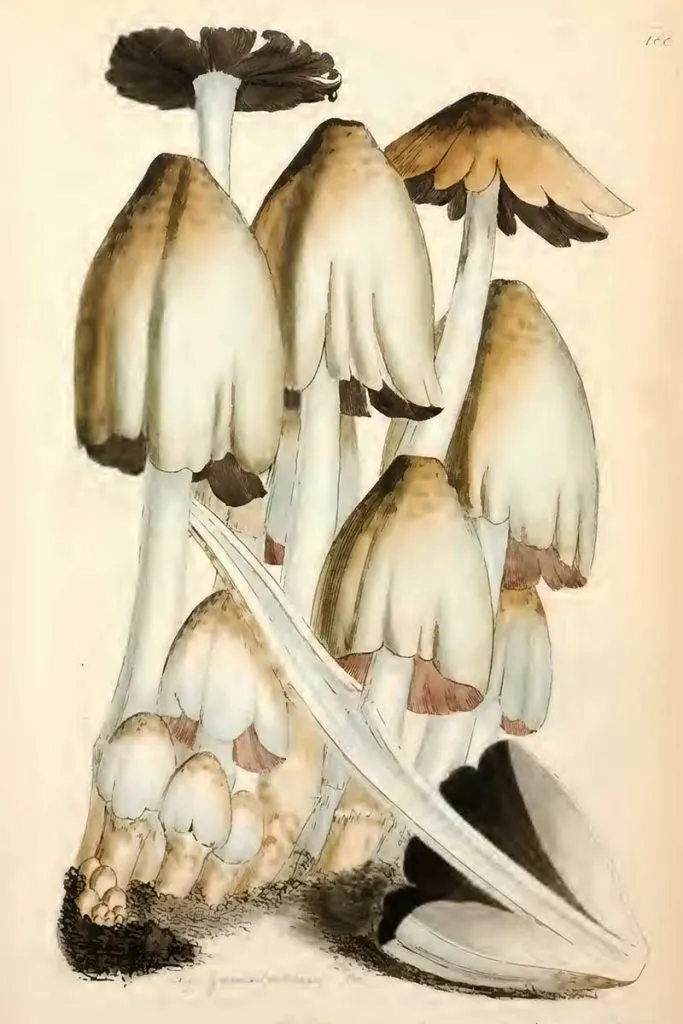
6. Coprinopsis picacea
The mushrooms in this drawing are poisonous and more commonly known as the magpie fungus due to their black and white markings. It is a native British fungus.
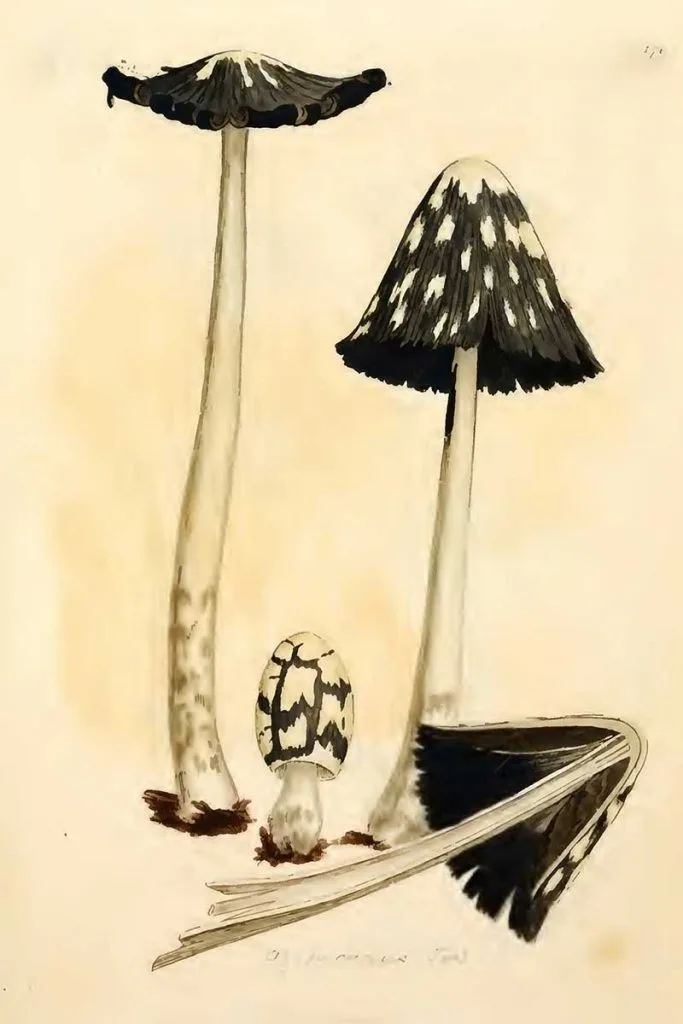
7. Cortinarius collinitus
This rusty brown mushroom is considered to be inedible.
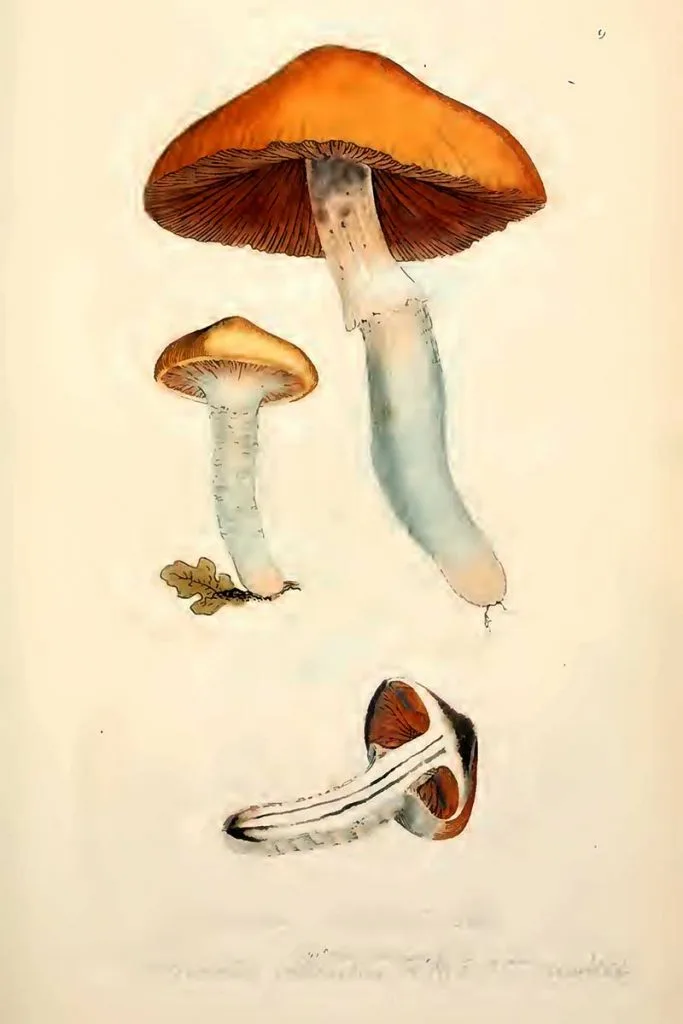
8. Hohenbuehelia mastrucata
A vintage fungus drawing of Hohenbuehelia mastrucata also more commonly known as the woolly oyster.
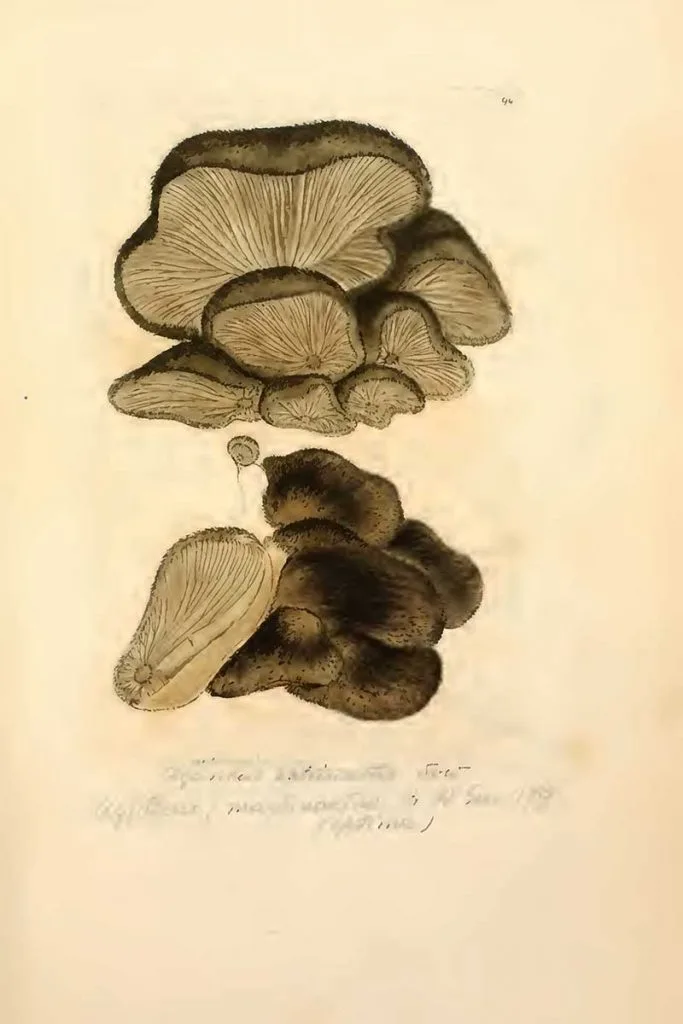
9. Hydnoporia tabacina
This is a tobacco-colored crust fungus found on the underside of hardwood branches.
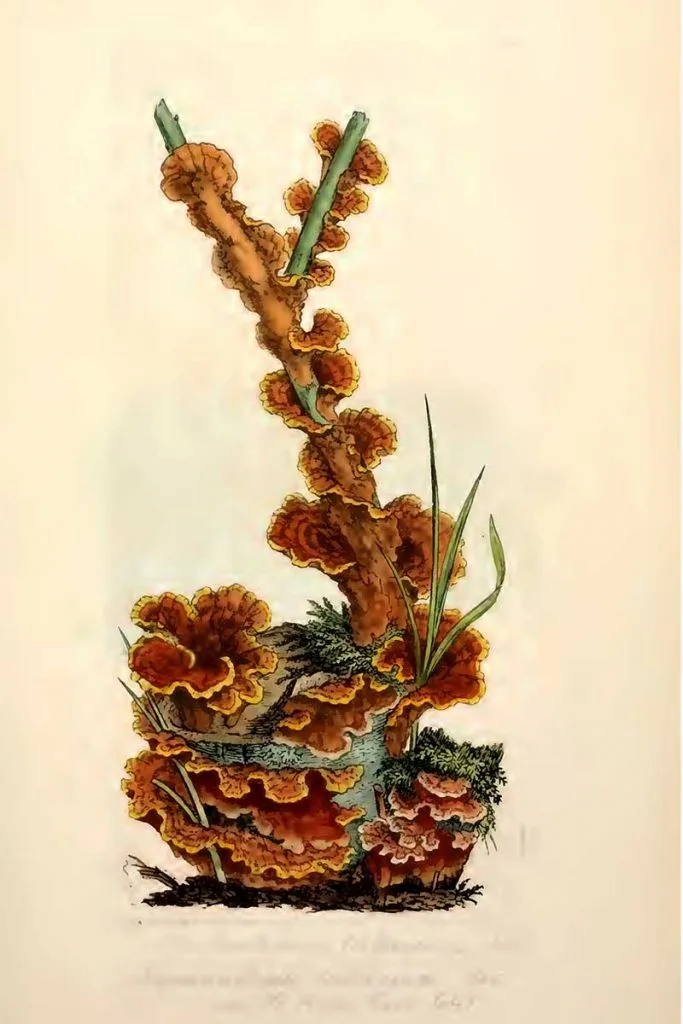
10. Hygrocybe conica
Vintage mushroom drawings of Hygrocybe conica, commonly known as the witch’s hat, is a colorful member of the genus Hygrocybe (the waxcaps), found across northern Europe and North America.
The edibility of these mushrooms is unclear, their slimy nature doesn’t really make them palatable.
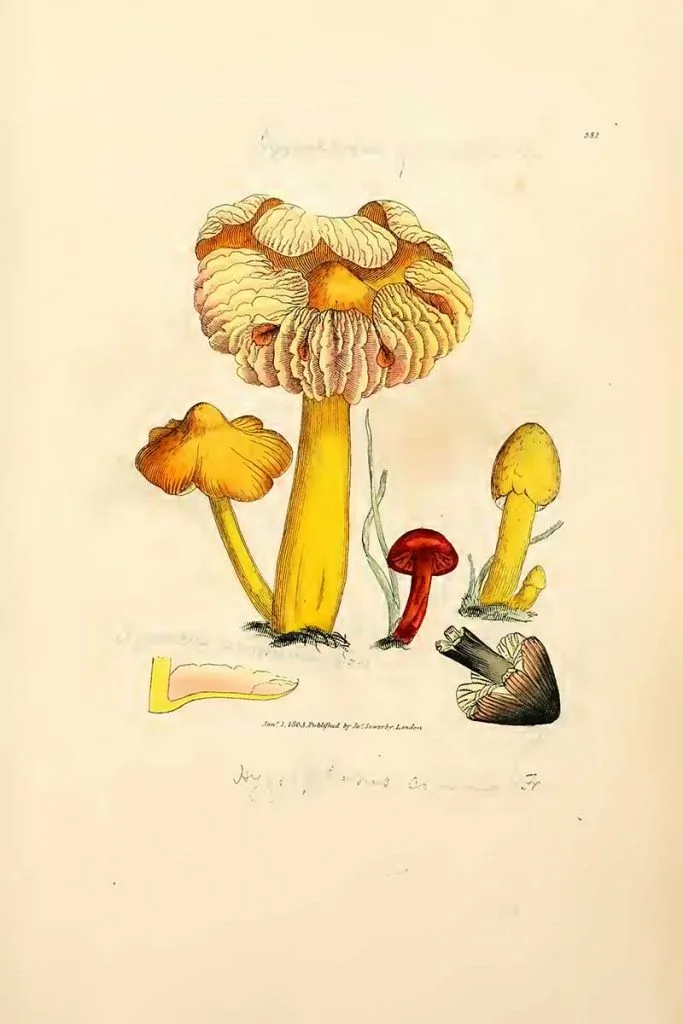
11. Laccaria amethystina
Laccaria amethystina mushrooms are more commonly known as the amethyst deceivers. These are small brightly colored mushrooms that grow in forests.
Even though the is edible, it but can absorb arsenic from the soil. Thus making it poisonous. The mushroom’s bright amethyst coloration fades with age. This makes it difficult to identify, hence the common name ‘amethyst deceiver’
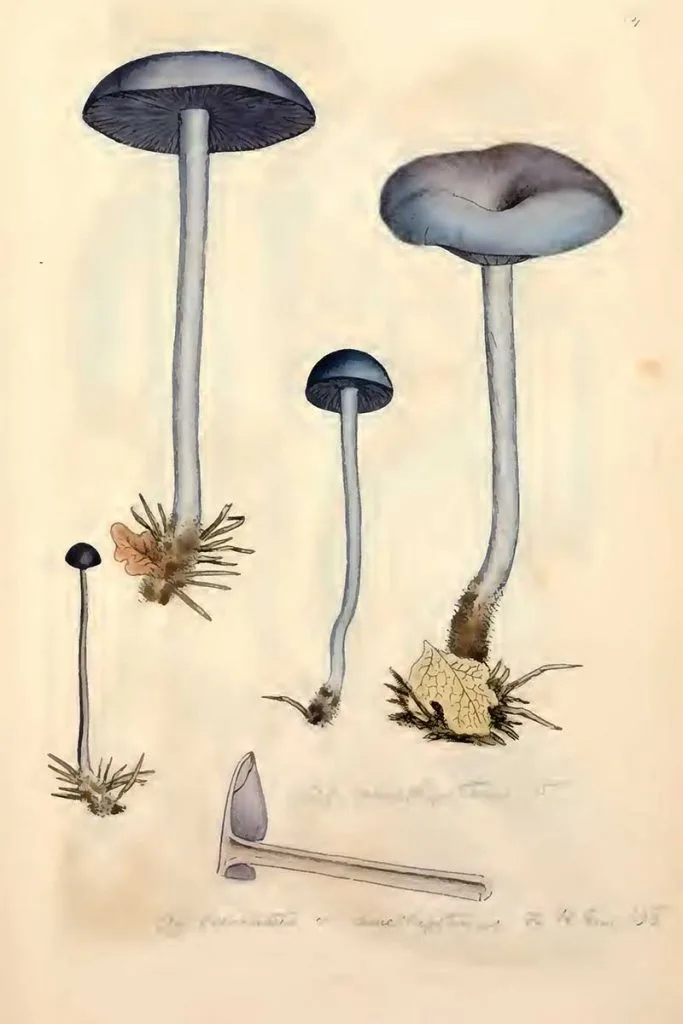
12. Lacrymaria lacrymabunda
The fungi in this drawing grow on disturbed ground in woodland, gardens, and parks. Lacrymaria lacrymabunda is occasionally described as an edible species. However, there have been reports of the mushroom causing stomach upsets.
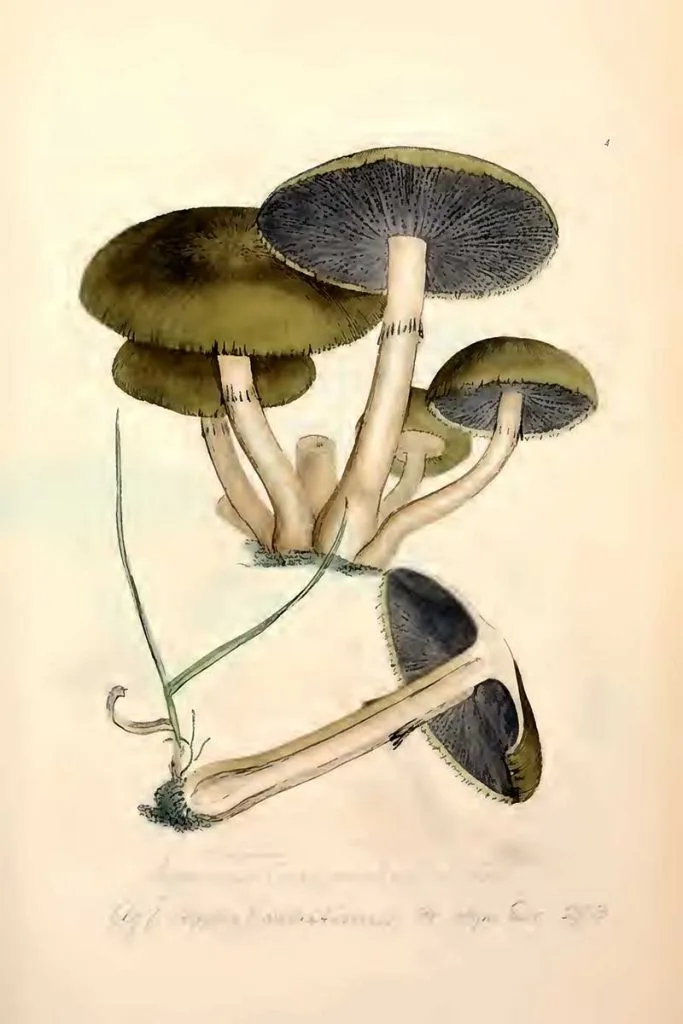
13. Mushroom Drawings – Lepiota cristata
This is probably a poisonous mushroom more commonly known as the stinking parasol. It is a common mushroom that can be found in the disturbed ground on lawns, paths, roadsides parks, and gardens.
The fungus has an unpleasant smell of burnt rubber.
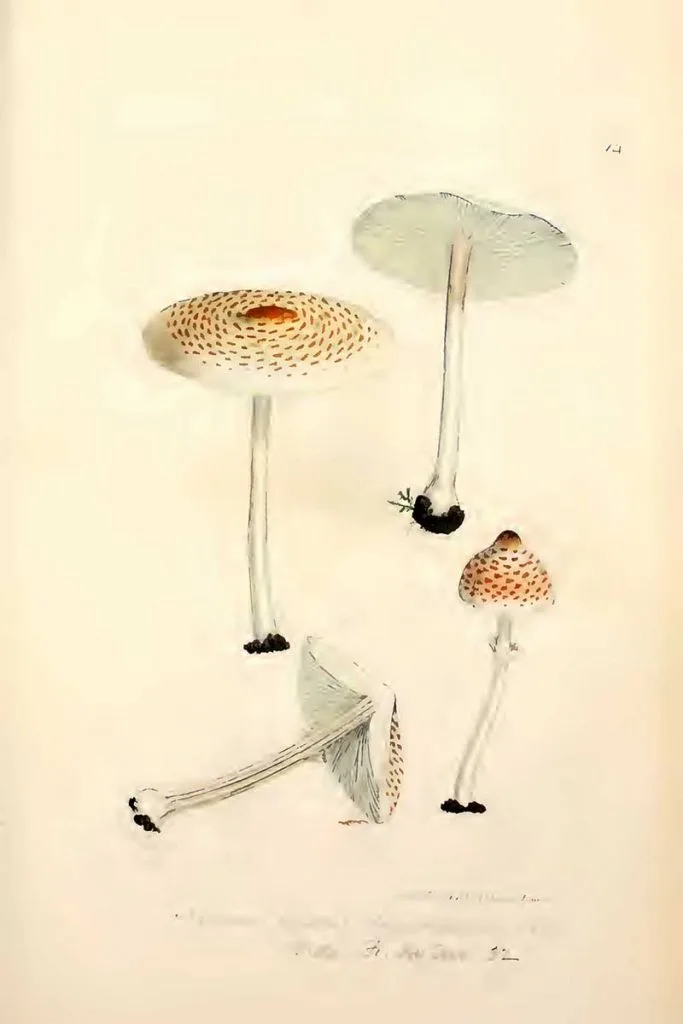
14. Leucocoprinus birnbaumii
These mushrooms are common in the tropics and subtropics. In colder climates, they tend to only grow in greenhouses and flowerpots. Which gives it the common names of flowerpot parasol and plant pot dapperling.
If the mushrooms are eaten in large quantities they are midly posinous.
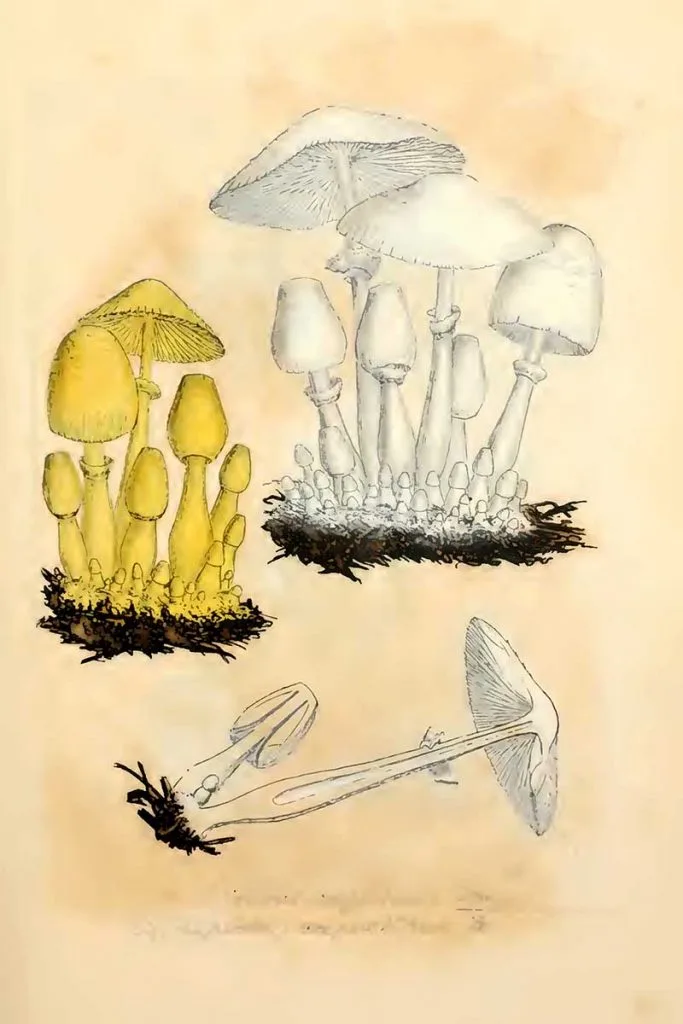
15. Morchella esculenta
The mushrooms in this drawing are probably one of the most recognizable edible mushrooms. They are move commonly known as the common morel.
The fungus fruits under hardwoods and conifers during a short period in the spring and is also associated with old orchards and woods.
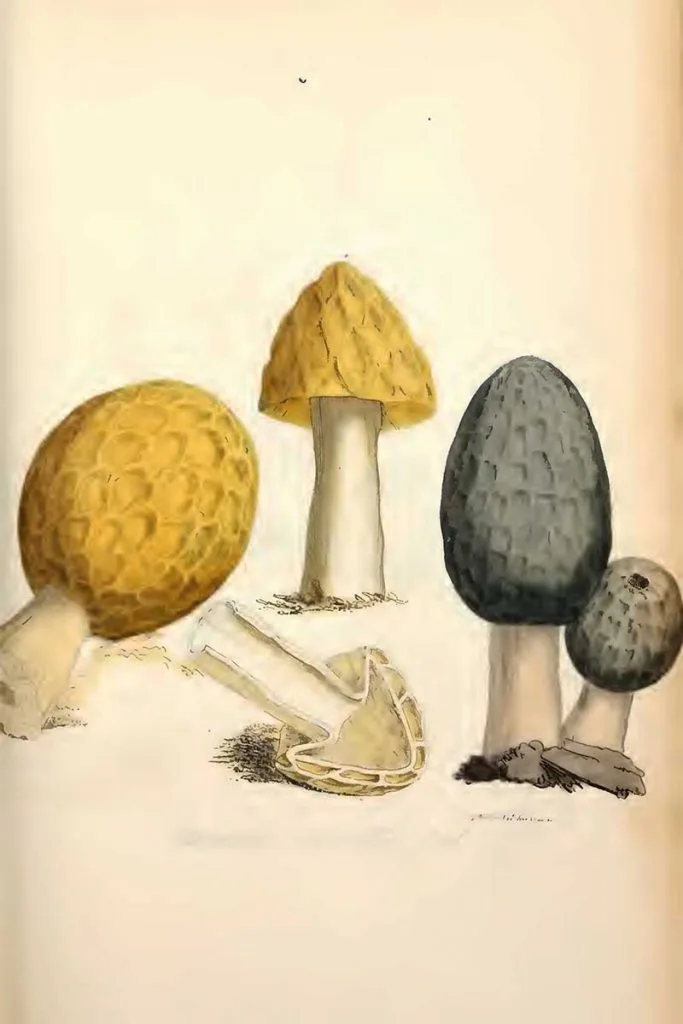
16. Mycena epipterygia
This common species in Europe grows on the ground in forests heather and agrid grasslands. It is edible but not particularly tasty.
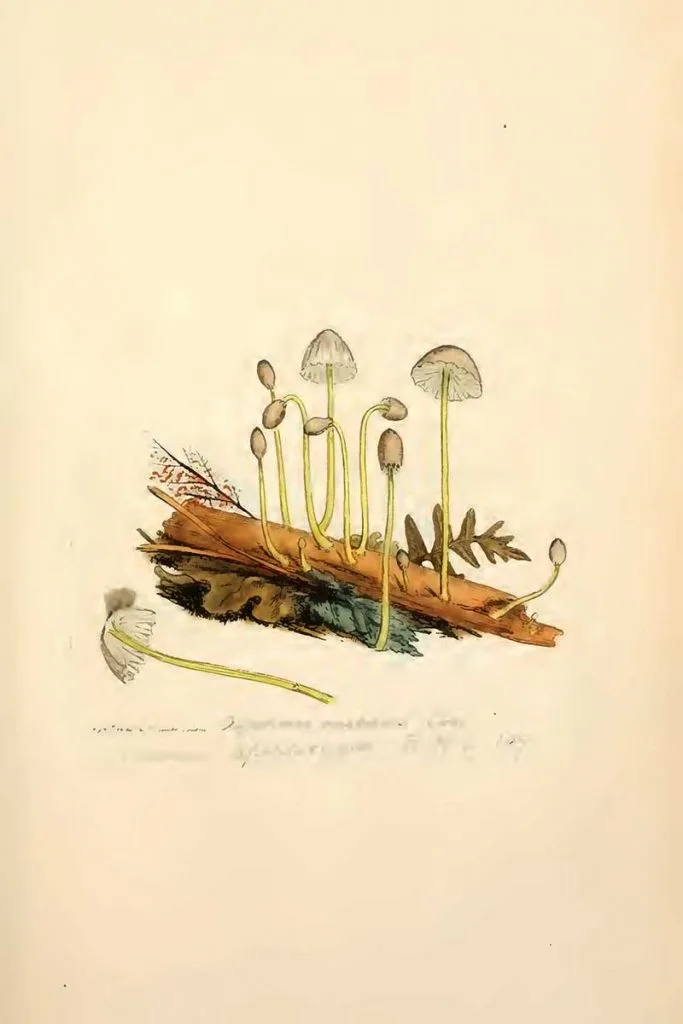
17. Sarcoscypha coccinea
This mushroom is more commonly known as the scarlet elf cup. It grows on decaying sticks and branches in damp spots on forest floor.
The fungus has been used medicinally by the Oneida Native Americans, and also as a colorful component of table decorations in England.
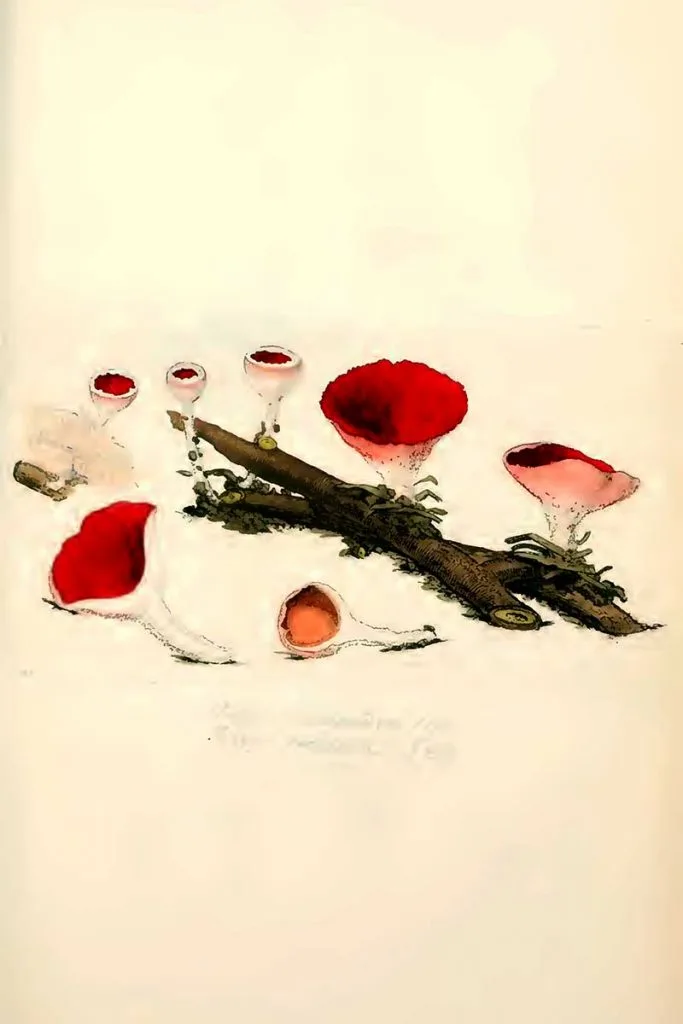
18. Phallus impudicus
The mushrooms in this drawing are more commonly known as the common stinkhorn. The fungus emits a foul odor and has phallic shape when mature.
Despite its smell immature mushrooms of this species are eaten in France and Germany.
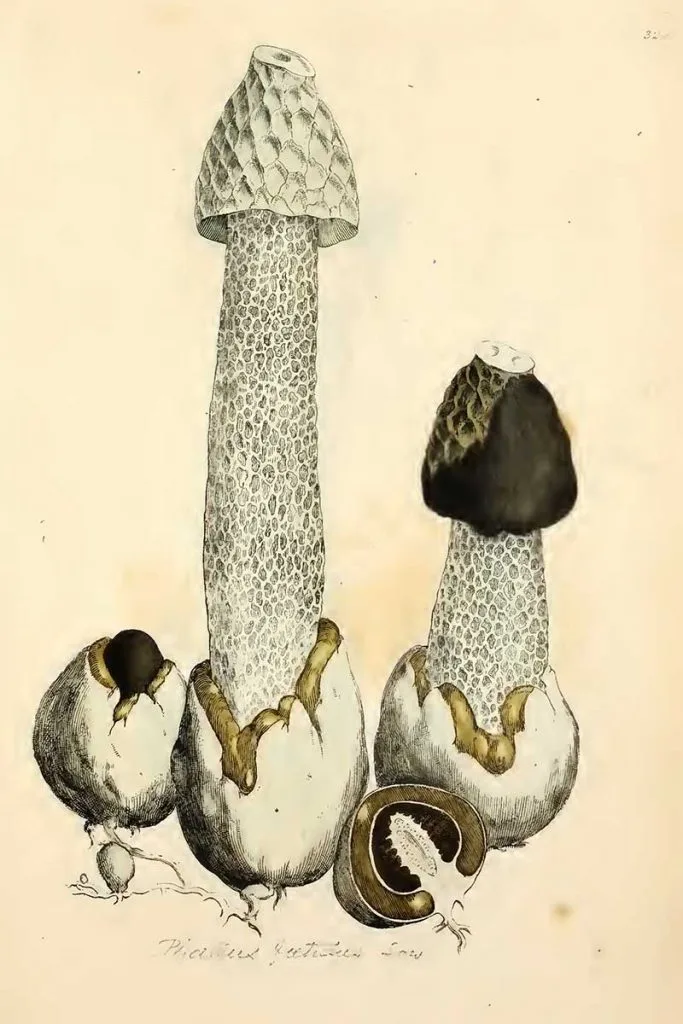
19. Stropharia aeruginosa
The fungi is commonly known as the verdigris agaric, is a medium-sized green, slimy woodland mushroom, found on lawns, mulch, and woodland from spring to autumn.
There is conflicting information on the edibility of the mushroom.
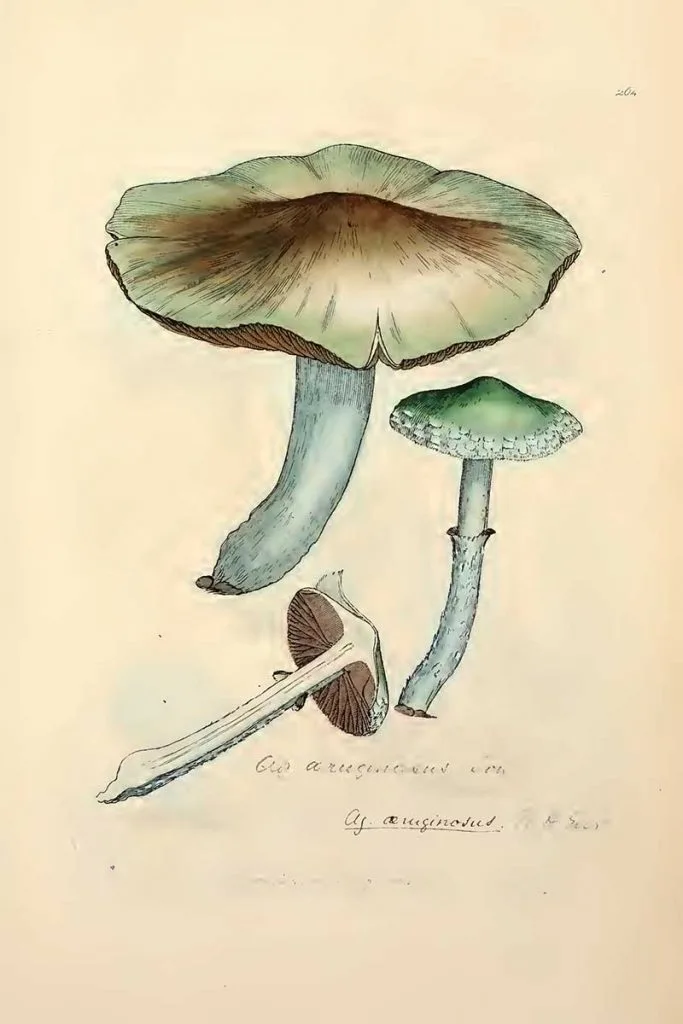
20. Mushroom drawing – Suillellus luridus
This fungus is commonly known as the lurid bolete. It is edible when cooked but not when raw or combined with alcohol.
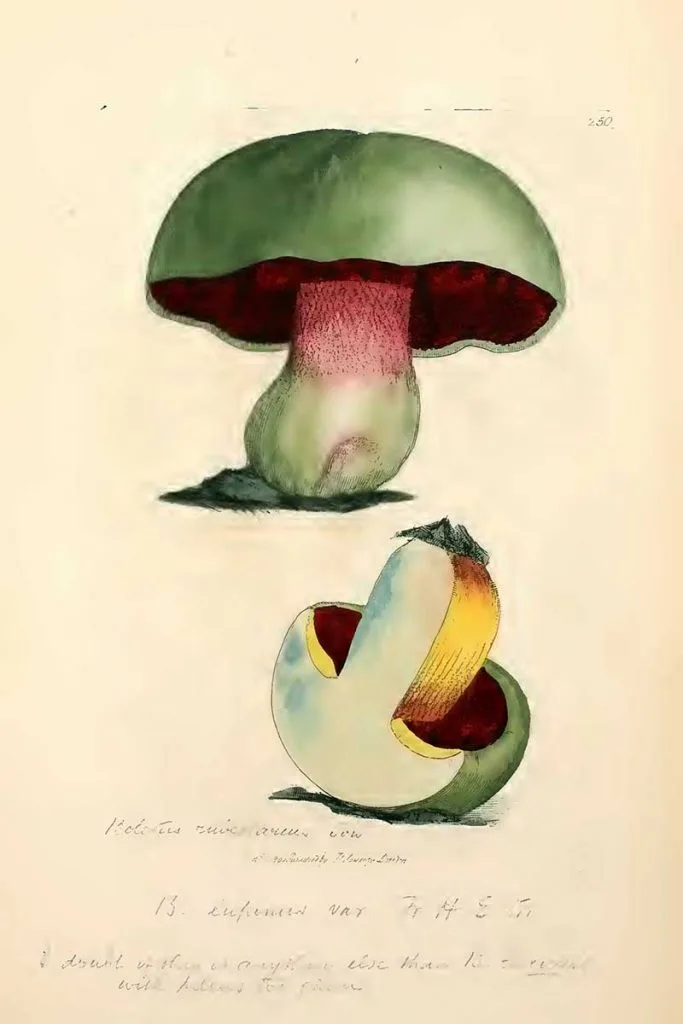
21. Tricholoma sejunctum
This fungus is also known as a yellow blusher. It is widely eaten, especially in China but there have been some reports of possible poisoning in Europe. However, it has shown anti-viral and anti-cancer properties.
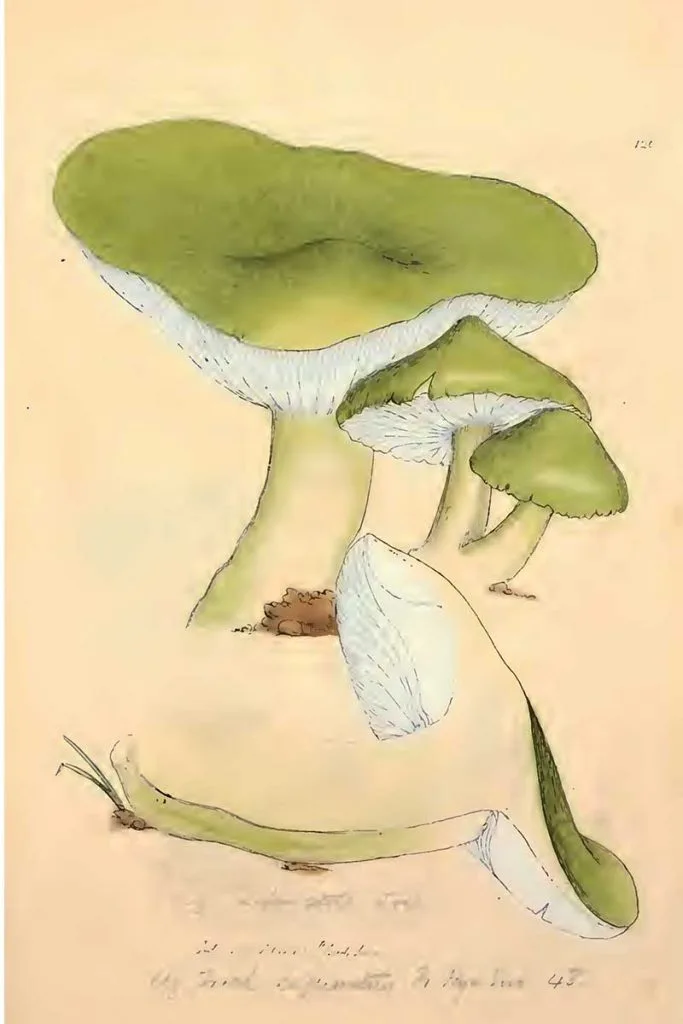
22. Tricholoma terreum
Grey cap mushroom drawings, commonly known as the grey knight. It is considered edible and sold in the markets of France.
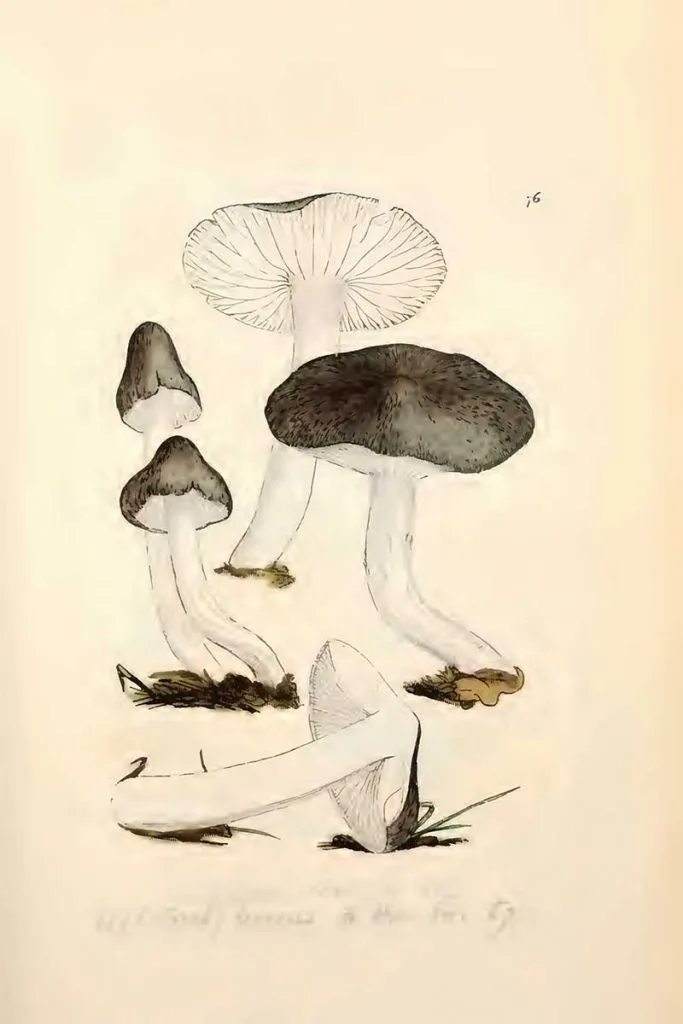
23. Tricholomopsis rutilans
This mushroom has the fun name of Plums and Custard, due to its plum-red scaled cap and crowded custard yellow gills.
It is edible when boiled but apparently not worth the effort.
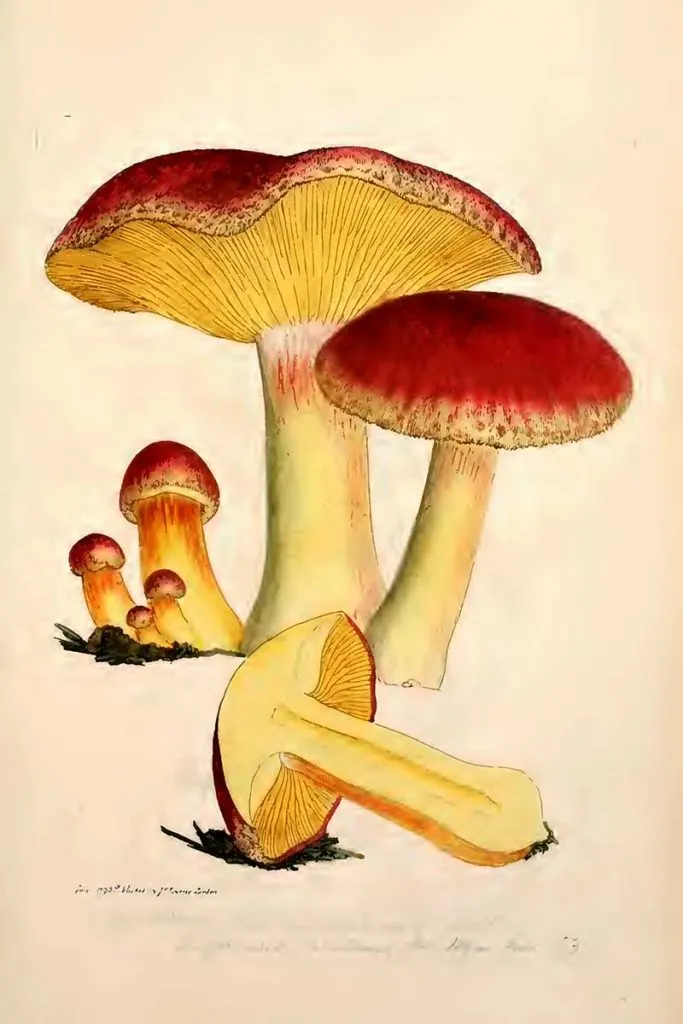
24. Drawings of unidentified Russula Mushrooms
There are about 750 species of Russula mushrooms. They are typically common, fairly large, and brightly colored – making them one of the most recognizable genera among mycologists and mushroom collectors.
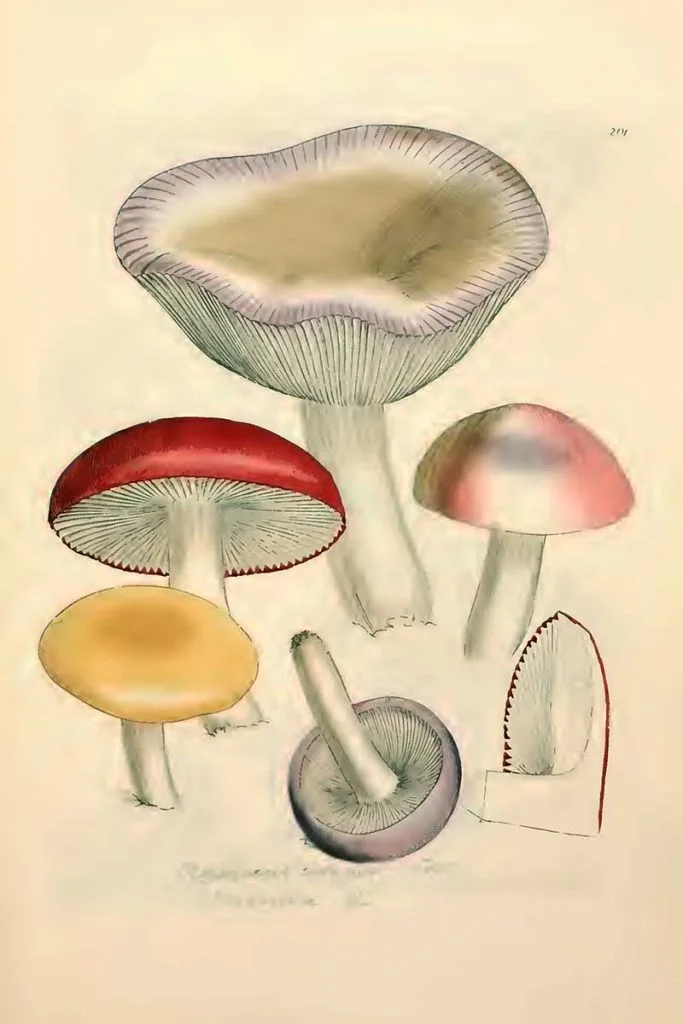
25. Volvariella volvacea
This final mushroom drawing in the collection is of Volvariella volvacea. The more common name of the mushroom is the straw mushroom. It is cultivated for food and widely used in Asian cooking. This species of mushroom is the third most popular cultivated mushroom in the world.
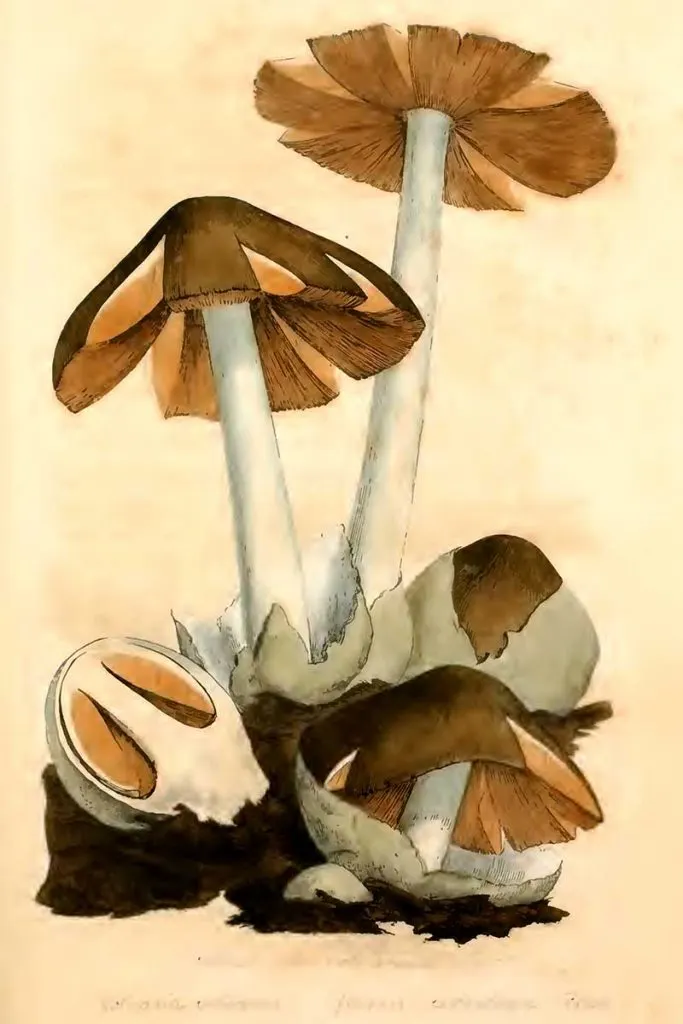
If you are looking for more fungi and mushroom drawings check out my collection of antique botanical posters of Adolphe Millot. There are a couple of mushroom identification posters in that collection.
Instead of just framing these mushroom prints, you can do a cool craft with them to make a fantastic vintage mushroom art display. Or why not go to drawing mushrooms yourself with this easy guide?
James Sowerby painted flowers as well as mushrooms, some of his lily paintings can be found here.
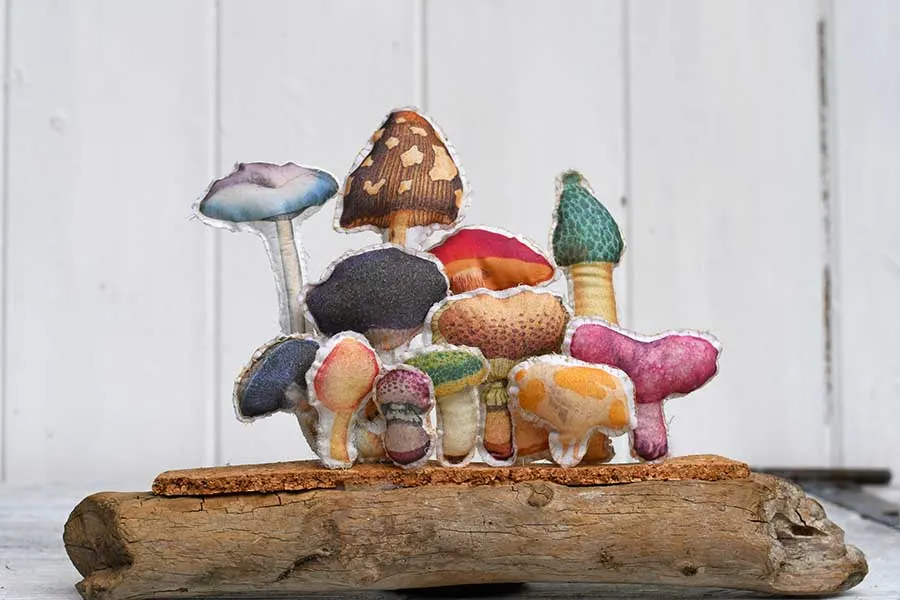
If you liked these illustrations, then you will probably also enjoy the collection of Japanese fungi art and vintage watercolour fruit paintings on Pictureboxblue, too.
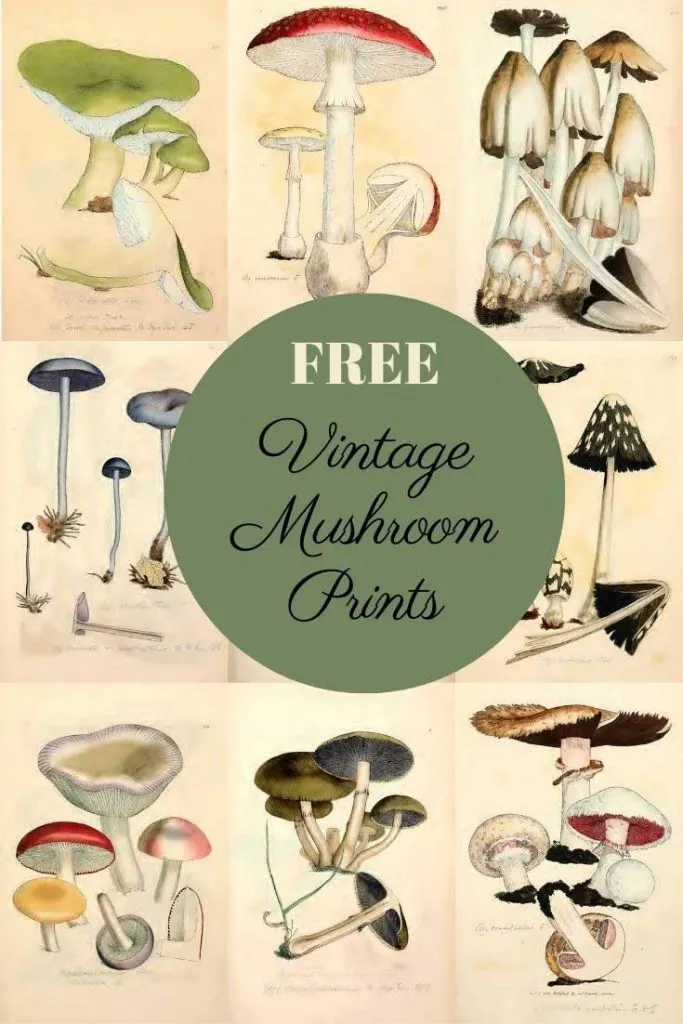
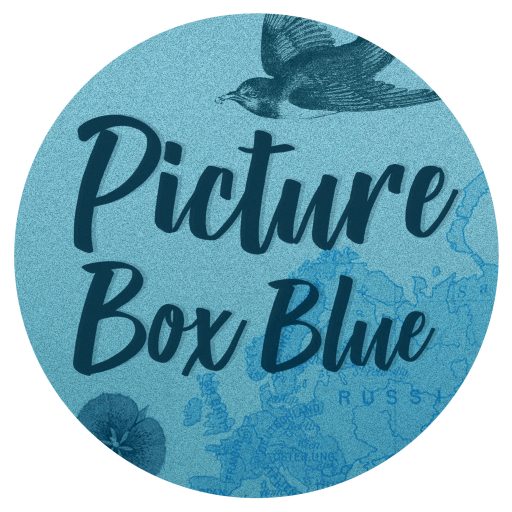
Angela
Monday 21st of March 2022
Thank you very much for your fabulous imags.
claire
Saturday 26th of March 2022
You're welcome, I enjoy finding them.
A Crafty Mix | Cutting Board Repurpose & 5 Tips for Making Miniatures - A Crafty Mix
Sunday 3rd of October 2021
[…] the poster, I found this beautiful mushroom printable at Picture Box Blue. She has an amazing collection of free printables to choose from. I resized the poster and just […]